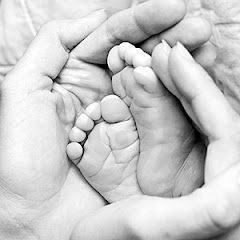There are an estimated 14 million people in the United States with diagnosed or undiagnosed diabetes! Many of these individuals will develop foot or lower leg complications at some point in their life. This can often lead to hospitalization. The best treatment for such conditions is prevention! The following is a list of important steps in the prevention of diabetic foot problems.
1. Wear comfortable shoes preferably fitted by a foot care specialist. Shoes should have more depth in the toe box and a firmer outer sole. Higher heels should be avoided as they place too much load on the ball of the foot.
2. NEVER walk barefoot or in stocking feet! Diabetic individuals often will lose sensation in their feet. As a result, if such an individual would step on a foreign object such as a splinter, they often have limited ability to feel it. This will allow the injury to go unnoticed permitting the possibility of infection to occur. These infections can lead to more serious complications and often hospitalization.
3. Wash feet daily and dry thoroughly, especially between the toes, it is best to use pressure rather than vigorous rubbing when drying. Excessive dirt and debris especially between the toes can lead to underlying bacterial and fungal infections. If you cannot reach your toes, a soft shower brush can be used for washing.
4. Apply a gently moisturizer to the feet once or twice daily. Diabetic individuals are prone to dry skin. These subtle scales and cracks in the skin can server as an opening for bacteria invasion and lead to skin infections. A gentle moisturizer to the feet will keep the skin soft and supple. It is important to avoid applying the moisturizer between the toes. Excessive moisture between toes can lead to fungal infections.
5. Thick brittle toenails are often a sign of fungal infection and should be treated by a physician. Having toenails trimmed by a trained professional is often a covered benefit with Medicare and most insurance companies for people with diabetes and associated conditions.
6. Corns and calluses can be treated at home with the gentle use of a pumice stone to the affected areas after bathing. Avoid the use of sharp objects or blades. Accidental cuts can serve as a source of bacterial infection and more serious foot complications. Avoid the use of commercial "corn and callous" removers. These are often mild acids and can lead to open wounds if not used properly.
7. Socks should be loosely binding and be comprised of cotton blend material. Cotton serves to absorb moisture while other materials such as acrylic will "wick" out moisture. White socks enable on to visualize if there is drainage or active bleeding from the feet and therefore are preferred over colored socks.
8. Inspect your feet daily. Look or open cuts or wounds. If you have difficulty seeing the bottom of your feet, hold a mirror underneath the sole for inspection.
9. Avoid extreme temperatures------do not soak feet in hot water or walk barefooted on hot surfaces. Diabetic individuals will often have decreased sensation to temperature changes and scalding injuries can go undetected.
10. Should you develop a wound cleanse the area and apply topical antibiotic ointment with sterile gauze of band aid. Consult your family physician or podiatrist immediately if any signs of redness, swelling, or increased pain.
People with diabetes are at increased risk for skin breakdown, foot ulceration and infection. A minor cut or blister can have serious consequences. By taking these necessary precautions, one can avoid injury and reduce the risk of serious foot problems.
By, Todd A. Zeno, DPM
Nail Care
Subscribe to:
Post Comments (Atom)



No comments:
Post a Comment